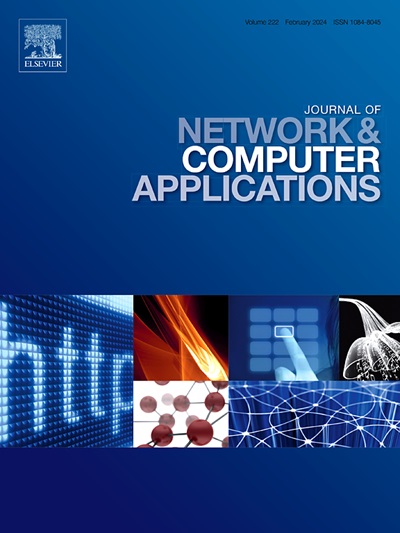RoamML distributed continual learning: Adaptive and flexible data-driven response for disaster recovery operations
IF 8
2区 计算机科学
Q1 COMPUTER SCIENCE, HARDWARE & ARCHITECTURE
引用次数: 0
Abstract
In the aftermath of natural disasters, Human Assistance & Disaster Recovery (HADR) operations have to deal with disrupted communication networks and constrained resources. Such harsh conditions make high-communication-overhead ML approaches — either centralized or distributed — impractical, thus hindering the adoption of AI solutions to implement a critical function for HADR operations: building accurate and up-to-date situational awareness. To address this issue we developed Roaming Machine Learning (RoamML), a novel Distributed Continual Learning Framework designed for HADR operations and based on the premise that moving an ML model is more efficient and robust than either large dataset transfers or frequent model parameter updates. RoamML deploys a mobile AI agent that incrementally train models across network nodes containing yet unprocessed data; at each stop, the agent initiate a local training phase to update its internal ML model parameters. To prioritize the processing of strategically valuable data, RoamML Agents follow a navigation system based upon the concept of Data Gravity, leveraging Multi-Criteria Decision Making techniques to simultaneously consider many objectives for Agent routing optimization, including model learning efficiency and network resource utilization, while seamlessly blending subjective insights from expert judgments with objective metrics derived from quantifiable data to determine each next hop. We conducted extensive experiments to evaluate RoamML, demonstrating the framework’s efficiency to train ML models under highly dynamic, resource-constrained environments. RoamML achieves similar performance to centralized ML training under ideal network conditions and outperforms it in a more realistic scenario with reduced network resources, ultimately saving up to 75% in bandwidth utilization across all experiments.
RoamML分布式持续学习:用于灾难恢复操作的自适应和灵活的数据驱动响应
在自然灾害之后,人类援助和灾难恢复(HADR)行动必须处理中断的通信网络和有限的资源。这种恶劣的条件使得高通信开销的机器学习方法(无论是集中式还是分布式)不切实际,从而阻碍了采用人工智能解决方案来实现HADR操作的关键功能:建立准确和最新的态势感知。为了解决这个问题,我们开发了漫游机器学习(RoamML),这是一种为HADR操作设计的新型分布式持续学习框架,其前提是移动ML模型比大型数据集传输或频繁的模型参数更新更有效和健壮。RoamML部署了一个移动AI代理,它可以跨包含未处理数据的网络节点增量训练模型;在每一站,智能体启动一个局部训练阶段来更新其内部ML模型参数。为了优先处理有战略价值的数据,RoamML代理遵循基于数据重力概念的导航系统,利用多标准决策技术同时考虑代理路由优化的许多目标,包括模型学习效率和网络资源利用,同时无缝地将来自专家判断的主观见解与来自可量化数据的客观指标相结合,以确定每个下一跳。我们进行了大量的实验来评估RoamML,证明了该框架在高度动态、资源受限的环境下训练ML模型的效率。RoamML在理想的网络条件下实现了与集中式机器学习训练相似的性能,并在更现实的场景中使用更少的网络资源,最终在所有实验中节省高达75%的带宽利用率。
本文章由计算机程序翻译,如有差异,请以英文原文为准。
求助全文
约1分钟内获得全文
求助全文
来源期刊

Journal of Network and Computer Applications
工程技术-计算机:跨学科应用
CiteScore
21.50
自引率
3.40%
发文量
142
审稿时长
37 days
期刊介绍:
The Journal of Network and Computer Applications welcomes research contributions, surveys, and notes in all areas relating to computer networks and applications thereof. Sample topics include new design techniques, interesting or novel applications, components or standards; computer networks with tools such as WWW; emerging standards for internet protocols; Wireless networks; Mobile Computing; emerging computing models such as cloud computing, grid computing; applications of networked systems for remote collaboration and telemedicine, etc. The journal is abstracted and indexed in Scopus, Engineering Index, Web of Science, Science Citation Index Expanded and INSPEC.
 求助内容:
求助内容: 应助结果提醒方式:
应助结果提醒方式:


